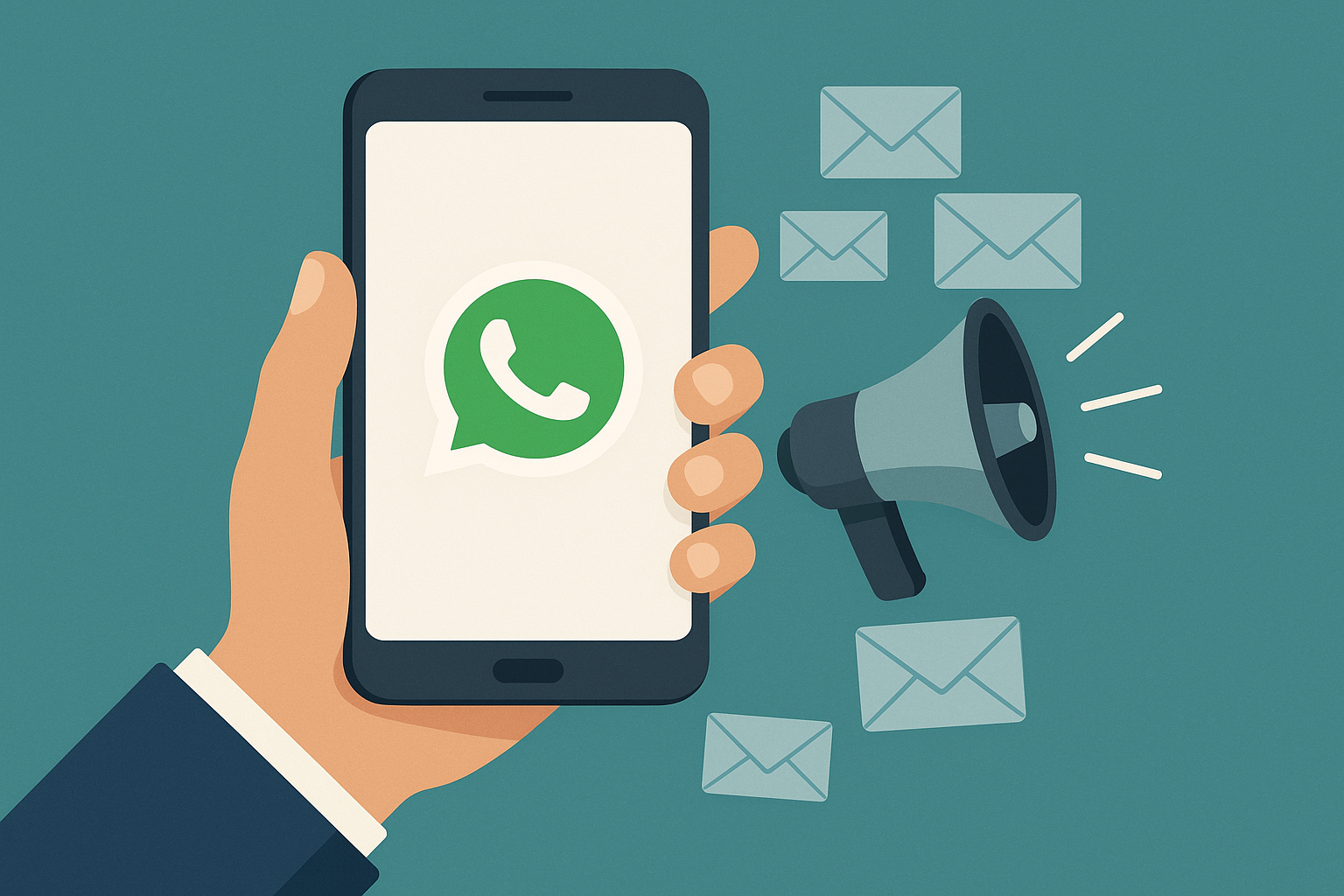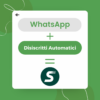Dopo anni di ascolto “Sta arrivando!” Rich Communication Services (RCS) è finalmente una realtà per molti consumatori. I telefoni Android di Google ce l’hanno e gli utenti Samsung hanno la possibilità di usarlo. Apple non ha annunciato l’intenzione di adottare RCS, ma gli esperti si aspettano che la mossa sia quasi inevitabile. Per le aziende che desiderano condurre esperienze mobili, l’adozione di RCS è un punto di svolta.
Che cos’è RCS?
RCS è un protocollo di comunicazione utilizzato dai gestori di telefonia mobile che rappresenta la prossima generazione di messaggi SMS. Fino a poco tempo fa, la maggior parte di ciò che accade nell’app di messaggistica predefinita del telefono è puramente testuale (con una buona dose di emoji). Con RCS, l’app di messaggistica nativa del tuo smartphone supporterà ricche funzionalità di messaggistica, rendendo il suo flusso di messaggistica predefinito molto più simile a WhatsApp, Messenger o Instagram Message. Molti utenti Android stanno già sperimentando ciò che riguarda RCS. Le funzionalità di RCS includono:
- [La cosa più importante!] Funzionalità simile ad un’app: gli utenti non sono più limitati a semplici scambi basati su testo. Condividi un sondaggio o una valutazione che possono essere compilati nel flusso di messaggi. Modifica le prenotazioni, prenota i biglietti, effettua un acquisto, aggiorna le impostazioni sulla privacy – di nuovo, tutto senza uscire dall’app di messaggistica telefonica nativa
- Larger File Size: Consumers and businesses can send larger files, including GIFs, videos, hi-res photos, PDFs, etc.
- Manda un sms! Simile alle app di messaggistica come Messenger e WhatsApp, RCS non ha limiti di caratteri
Per i leader di marketing e CX, questo spostamento è un enorme cambiamento nel panorama del coinvolgimento mobile. Utilizzando RCS, le aziende possono interagire in modi nuovi e interattivi. Vuoi informare un cliente che un pacco è in arrivo? Invece di inviare un semplice messaggio “il tuo pacchetto sta arrivando oggi”, condividi una mappa che mostra aggiornamenti in tempo reale e consente ai clienti di fornire istruzioni specifiche (ad es. “Lascialo sulla mia veranda, per favore!”).
Cinque modi in cui RCS promuoverà il modo in cui le aziende raggiungono i propri clienti e promuoveranno vendite più elevate
1. Tassi di conversione più elevati
RCS offre alle aziende la possibilità di recapitare messaggi altamente personalizzati, in un formato molto più interattivo. E un’esperienza migliore significa tassi di conversione più elevati. Diamo un’occhiata ad alcuni scenari del settore:
Voyage: una catena di hotel desidera informare i clienti sulle offerte di San Valentino. Utilizzando SMS / TXT, l’hotel può inviare un breve messaggio di solo testo più un collegamento ipertestuale. Utilizzando RCS, l’hotel può inviare foto delle sue destinazioni di promozione con i relativi prezzi, sviluppare approfondimenti su quali promozioni catturano l’attenzione di specifici clienti e utilizzare i dati per formare un viaggio dell’acquirente 1: 1 più chiaro. Una volta che il cliente ha prenotato l’affare, usando RCS l’hotel può offrire ulteriori affari, dagli aggiornamenti alle camere allo champagne e alle rose in attesa nella stanza.
Health care: una farmacia vuole aumentare la lealtà aiutando i suoi clienti a gestire le prescrizioni. Utilizzando i messaggi di testo tradizionali, la catena ricorda al cliente che è in arrivo un ordine di ricarica. “Vuoi compilare la tua prescrizione per la metformina? Testo sì or no . ” Usando RCS, il cliente può gestire tutte le sue prescrizioni nel flusso di sms, attivare le ricariche automatiche e sospendere gli altri, e avvisare quando saranno presenti per ritirare la ricarica successiva.
Retail: una catena di prodotti per la casa vuole sviluppare relazioni più profonde con i propri clienti. Utilizzando SMS, invia una notifica di un’imminente vendita. Con RCS, la catena di vendita al dettaglio invia i prezzi di vendita per una mezza dozzina di prodotti che il cliente è più probabile che desiderino sulla base dell’analisi della loro cronologia degli acquisti – e offre ai clienti la possibilità di acquistare senza uscire dal flusso di messaggi di testo
Quanto è grande il salto di prestazione da SMS a RCS? La compagnia assicurativa francese Macif riporta che le percentuali di clic su RCS sono il doppio di quelle degli SMS e 3 volte quella delle e-mail.
2. Reduce the clutter of the channels
La ricerca di Sinch mostra che i consumatori sono entusiasti della messaggistica mobile di prossima generazione e, in particolare, trovano l’idea di aggregare TUTTA la messaggistica nella casella di posta predefinita del telefono “estremamente utile”. (Vedi tabella sotto.)
Therefore, even as brands are committed to multiplying the number of messaging channels they use to reach customers, consumers suggest they would like less channels.
Consumers want to simplify messaging
Would it be helpful if all mobile chat tools are placed using the phone's default TXT / SMS application?

3. Utilità in tempo reale
Uno dei principali vantaggi di RCS è consentire alle aziende di fornire ai propri clienti un’utilità aggiornata e in tempo reale. Ad esempio:
Changing the booking of a flight without a call center: le chiamate in entrata ai call center richiedono tempo per il cliente e sono costose per un’azienda. Utilizzando RCS, i clienti possono richiedere modifiche al proprio itinerario ed essere in grado di inviare una nuova copia del biglietto o della carta d’imbarco direttamente alla propria casella di posta.
Abandoned cart targeting: remind customers of incomplete checkouts by sending pictures of the items they left in their online carts, and even let them complete their purchase from their inbox.
Increase Delivery Completions: fai sapere ai clienti che il loro pacco è in arrivo e fornisci loro opzioni selezionabili per lasciare in un posto sicuro o programmare la riconsegna, il tutto senza dover lasciare la posta in arrivo.

Questi tipi di interazioni sono preziosi perché, per loro natura, sono personalizzati. adatto unicamente per un singolo individuo. Come Michael Ricci, Master Principal Solutions Architect del CX Center of Excellence di Oracle, ha recentemente condiviso il rapporto Sinch Mobile Consumer Engagement 2020:
“ Senza personalizzare l’esperienza del cliente, la maggior parte dei consumatori rinuncia. Questa è la sfida più grande: aiutare i marchi a capire che è il momento di riunire quei dati in modo che in modo olistico possano personalizzare i loro tocchi con i consumatori. ”
4. Bypass disabled notifications
La ricerca di Sinch mostra che 1 consumatore su 4 “spesso” disabilita le notifiche dalle app sui propri telefoni (e il rapporto sale a 1 su 3 per la Gen Z). Per i marchi che si affidano pesantemente alle proprie app per raggiungere i clienti, ciò presenta un problema: potrebbero mancare informazioni sensibili al tempo. La messaggistica nativa, tuttavia, ha molte meno probabilità di essere disattivata. Secondo la ricerca di Sinch, la metà dei consumatori ha zero unread messages in the inbox e l’85% ha 10 o meno messaggi non letti. La lezione? La messaggistica nativa raggiunge il suo obiettivo a un ritmo incredibilmente alto.
5. Metriche più approfondite
Con l’avvento di RCS, i leader del marketing e dell’esperienza del cliente hanno a disposizione un set di dati molto più solido. Piuttosto che una semplice “conferma di lettura”, i messaggi inviati tramite RCS hanno la stessa profondità di analisi disponibile che si potrebbe trovare usando l’e-mail. Per esempio:
- Messages sent, delivered and opened
- Click-through rate, including the best performing part of the message
- In-stream engagement and completed actions / transactions
- Metriche del call center, inclusi tasso di risoluzione e analisi del sentiment. “Con dati più ricchi, le aziende hanno la capacità di comprendere meglio il cliente per affinare il modo in cui raggiunge, coinvolge e converte ogni individuo attraverso una comunicazione più personalizzata
Per le aziende, la messaggistica RCS è un modo efficace per creare conversations più coinvolgenti con i clienti e fornire un valore di utilità molto più elevato sui dispositivi mobili. E secondo la ricerca di Sinch, i consumatori sono pronti e disposti a provare nuovi usi per la messaggistica mobile.




